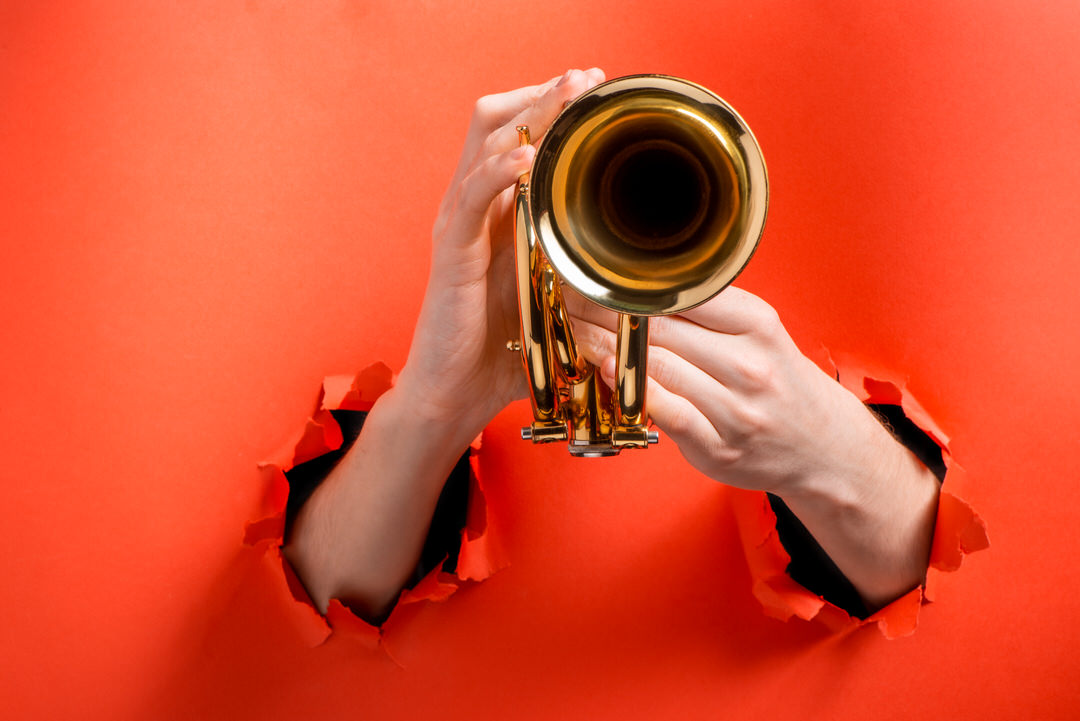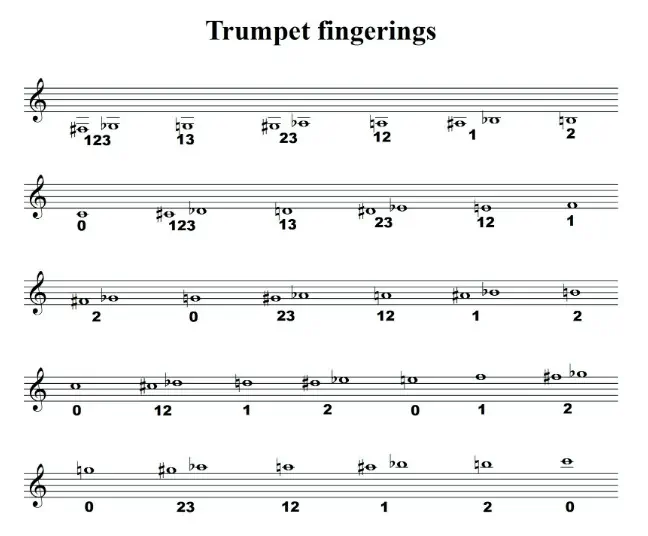how to play the Trumpet
Teaching yourself to play the Trumpet
Hopefully, you’re excited that you have purchased your trumpet – what is next? Figuring out how to play the trumpet would be a good start… This portion of our ‘Beginner’s Guide To Learning the Trumpet’ will start you off in the appropriate route.

Holding the Trumpet
Like many instruments, the trumpet has a standard grip which is the same whether you’re right-handed or left-handed. You will hold the instrument with your left hand and use your right hand to press the keys. Some left-handed beginners may worry about playing the instrument with their non-dominant hand but most players adapt very quickly and may even find it slightly easier to hold the trumpet because their left hand is stronger.
When you hold the trumpet, use a relaxed but firm grip with your left hand. Keep it steady without getting stiff or tight. Let your left hand support the trumpet’s weight so you can keep your right hand loose and flexible. If your right hand is holding the trumpet you’ll end up gripping the trumpet too tightly which causes unwanted tension in your playing.
On every trumpet, there is a small ring next to the third valve casing. This ring adjusts the trumpet’s tuning by operating the third valve slide, the further out it goes the lower the pitch of the note becomes due to the lengthened tubing. Place your left ring finger through this ring (this may vary, some use the left middle finger for example, so go with whatever’s most comfortable for you).
Next, wrap your left index finger and your left middle finger around the valve casings. Rest them next to your left ring finger. Together, all three fingers of your left hand will support the trumpet’s weight.
Your trumpet also has a first valve slide ring nearer to your body. During your early lessons, you probably won’t be operating this valve slide very much because it’s used for fine-tuning sharp notes. This is especially important on low D’s and Csharps which tend to be sharp on most trumpets but your teacher should help you with this until you become a more proficient player. In the meantime, the first valve slide is where you will place your left thumb.
With your left thumb in the first valve slide ring, your left ring finger in the third valve slide ring, and your index and middle fingers supporting the valve casings, your left hand is all set to go.
Now let’s switch over to see what your right hand is up to…
First, place your right thumb between the first and second valve casings, beneath the pipe that attaches to the mouthpiece. This helps you balance the instrument.
Second, align your index, middle, and ring fingers with the three-valve keys. Pressing the keys manipulates the trumpet’s airflow and this is how you play different notes. When you’re not pressing a key, gently rest your fingertips. Avoid the temptation to rest your right little finger in the finger hook if possible, as this can lead to a bad habit of pulling the trumpet towards your face as you’re playing, again causing unwanted tension.

Creating a Sound
A sound is made on the trumpet when the air travelling past our lips creates a vibration, we often call this a ‘buzz’. When we buzz with our lips inside a trumpet mouthpiece, the sound is amplified. Add a trumpet onto the mouthpiece and the sound becomes even louder as the vibration now has the full length of the trumpet to travel and become the sound we know and love. The key ingredient here is the air, and so one of the most important aspects of your trumpet playing will be the breathing. Always aim for a full and relaxed breath and the rest will follow.
Once you’ve jumped the first hurdle of creating a sound you’ll now need to learn the valve combinations so that you can play more than one note. There are only seven possible valve combinations on the trumpet ranging from C to F-sharp, all notes above and below this are achieved by speeding up or slowing down the air (and therefore the vibration of the lips).
Here is a fingering chart for the full range of the trumpet up to a top C. Don’t worry, you won’t need to learn all these from the off, most beginner books will just use five notes (C,D,E,F and G)

So your first task is...
to get comfortable knowing which valve combination is which letter of the alphabet! Practice playing C to G and back again, pressing only one note down at a time, and keeping all the other fingers as still as possible. It sounds simple. It’s not…
Other Languages
This system is called the ‘English notation system’. It is the standard used today across most of the world. However, you will always find some countries and people using a different system.
The second most popular system is called the ‘Fixed Do system’. You’ll have heard it from the song ‘Do Re Mi’ from ‘The Sound of Music’. Instead of C, D, E, F, G, A, B, this notation uses Do, Re, Mi, Fa, Sol, La, Si.
How To Play the Trumpet - Summary
By now, you should be able to:
- Hold the trumpet correctly
- Create a sound by vibrating your lips into the mouthpiece.
- You’ll know the valve combinations for C, D, E, F and G.
- You’ll now be able to play countless tunes using just those five notes.
Now it’s time to improve your technique…
About the Author
Cai Isfryn
My name’s Cai Isfryn and I’m a trumpet player who’s performed with Public Service Broadcasting and Bastille, appearing numerous times at Glastonbury Festival as well as some of the world’s most famous concert halls such as the Sydney Opera House and The Royal Albert Hall. I studied at the Guildhall School of Music and Drama and am endorsed by Bach (I play a Stradivarius model 37). Aside from the trumpet I enjoy yoga and meditation as well as any endurance sport. I’m currently training for my first Ironman next year.
Other posts by this author
Tips, Tricks & Lots Of Different Musical Content
Will you be losing out? We all get swamped with e-mails, but I can guarantee there is one you’ll not want to miss; our 4 Feature Friday email.
Every Friday, I’ll give you a short email so I can treat you to a handful of the great things that I’ve recently learned.
It could literally be about anything to do with music. It’ll finish up in the email if I think you’ll like it!
Touring the planet as a music performer means I get to try out stuff you wouldn’t believe, and sharing it to you will make a lovely end to your week. Register free directly below.
Read the next post in this series:




